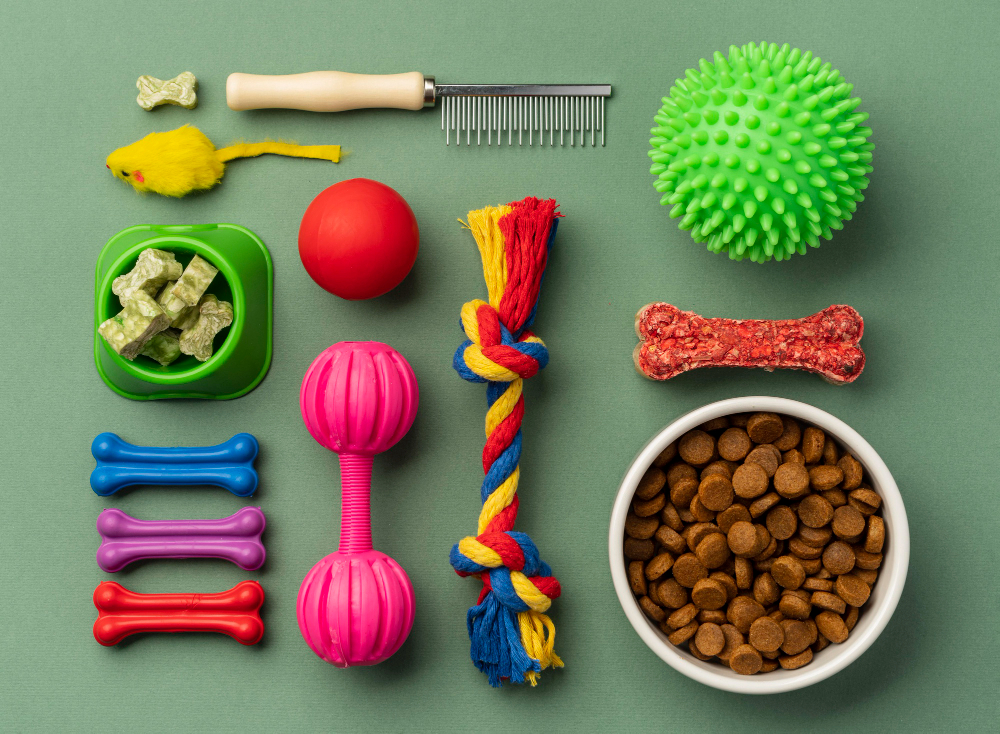Pets bring endless joy into our lives, and keeping them happy and healthy is a top priority for any pet owner. One of the best ways to enrich your pet’s life is through engaging toys that stimulate their minds, promote exercise, and strengthen your bond. Whether you have a playful pup, a curious cat, or any other beloved pet, the right toys can make a world of difference. In this blog, we’ll dive into the wonderful world of pet toys, exploring their benefits, types, and how to choose the best ones for your furry companion.
1. The Importance of Pet Toys
Physical Exercise: Pet toys are essential for keeping your furry friend active and healthy. Interactive toys encourage physical activity, helping to prevent obesity and maintain overall fitness. Regular playtime not only keeps pets physically fit but also helps reduce behavioral issues caused by pent-up energy.
Mental Stimulation: Toys that challenge your pet’s intellect are crucial for mental stimulation. Puzzle toys and treat-dispensing gadgets engage your pet’s problem-solving skills, preventing boredom and promoting cognitive health. Mental exercise is just as important as physical activity and can help keep your pet sharp and focused.
Bonding and Socialization: Playing with your pet using toys strengthens the bond between you and your furry friend. Interactive toys also encourage socialization, helping pets develop positive behaviors and reducing anxiety. Engaging playtime fosters trust and companionship, making your pet’s life more fulfilling.
2. Types of Pet Toys
Interactive Toys: Interactive toys, such as treat-dispensing puzzles and automated fetch machines, are designed to engage your pet’s mind and body. These toys keep your pet entertained for longer periods and provide mental challenges that stimulate their problem-solving abilities.
Chew Toys: For dogs, especially, chew toys are a must-have. They help satisfy the natural urge to chew, which is crucial for dental health. Chew toys come in various materials like rubber, nylon, and rope, offering durability and resistance to aggressive chewers.
Balls and Fetch Toys: Balls and fetch toys are great for high-energy dogs who love to run and chase. These toys come in various sizes and materials, including rubber, tennis ball, and squeaky versions. Fetch toys are perfect for outdoor play and help keep your dog active and engaged.
Cat Toys: Cats enjoy a range of toys, from feather wands and laser pointers to crinkle balls and interactive feeders. Cat toys that mimic prey or encourage climbing and pouncing can keep your feline friend entertained and satisfied.
Comfort Toys: Comfort toys, such as plush stuffed animals and cozy blankets, provide comfort and security to pets, especially puppies and kittens. These toys can help ease separation anxiety and offer a sense of security when you’re not around.
Puzzle Toys: Puzzle toys are designed to challenge your pet’s problem-solving skills. These toys often involve hiding treats or kibble inside compartments that require your pet to figure out how to access the rewards. Puzzle toys are great for keeping pets mentally stimulated and entertained.
3. Choosing the Right Toy for Your Pet
Consider Your Pet’s Size and Breed: When selecting toys, consider your pet’s size and breed. Large breeds may require sturdier toys, while small breeds or cats may benefit from smaller, lighter toys. Ensure the toy is appropriate for your pet’s size to prevent choking hazards or other safety concerns.
Check Material Safety: Always choose toys made from non-toxic, pet-safe materials. Avoid toys with small parts that could be swallowed or chewed off. Opt for durable materials that can withstand your pet’s play style and won’t pose a risk to their health.
Evaluate Play Style: Consider your pet’s play style when choosing toys. If your pet enjoys chewing, look for durable chew toys. For active pets, consider interactive or fetch toys that encourage exercise. Understanding your pet’s preferences helps ensure the toy will be engaging and enjoyable.
Mix It Up: Variety is key to keeping playtime exciting. Rotate different toys to keep your pet’s interest and prevent boredom. Introducing new toys periodically can offer fresh challenges and maintain enthusiasm for playtime.
4. DIY Pet Toys:
Homemade Chew Toys: Create DIY chew toys using materials like old t-shirts, towels, or socks. Braid or knot the fabric to make a durable and engaging chew toy for your dog. Just be sure the materials are safe and free of small parts.
Interactive Puzzle Toys: You can make simple puzzle toys by hiding treats in a muffin tin and covering them with tennis balls. Your pet will have to remove the balls to access the treats, providing mental stimulation and entertainment.
Catnip Toys: For cats, you can create homemade toys by filling small fabric pouches with catnip. Sew or tie the pouches securely and let your cat enjoy the aromatic playtime.
5. Conclusion
Pet toys are more than just playthings—they are essential tools for maintaining your pet’s physical and mental well-being. From interactive puzzles to comforting plush toys, the right toys can enhance your pet’s quality of life, promote healthy behavior, and strengthen your bond. By selecting safe, engaging, and appropriate toys, you’ll provide endless fun and enrichment for your furry friend.


